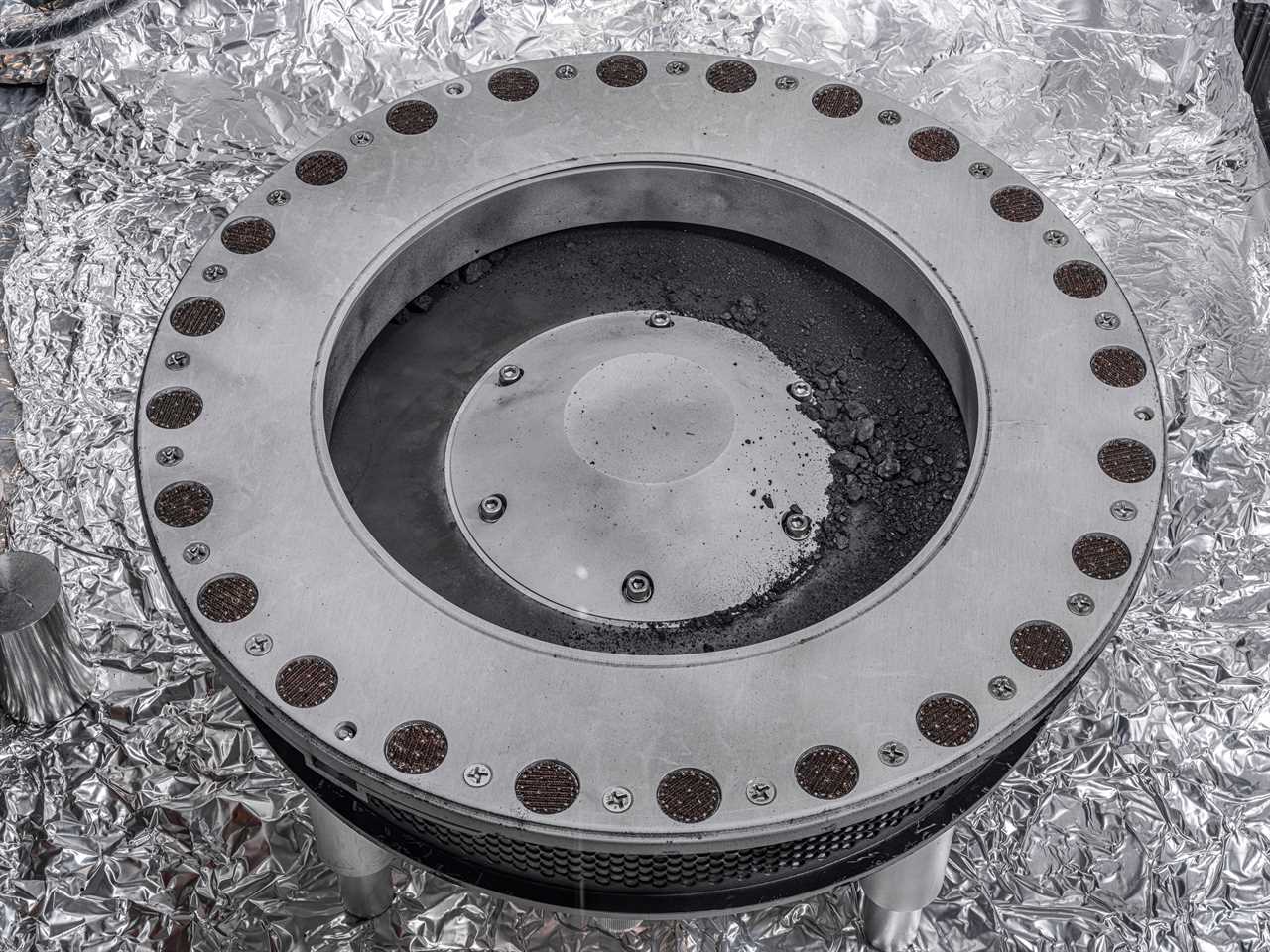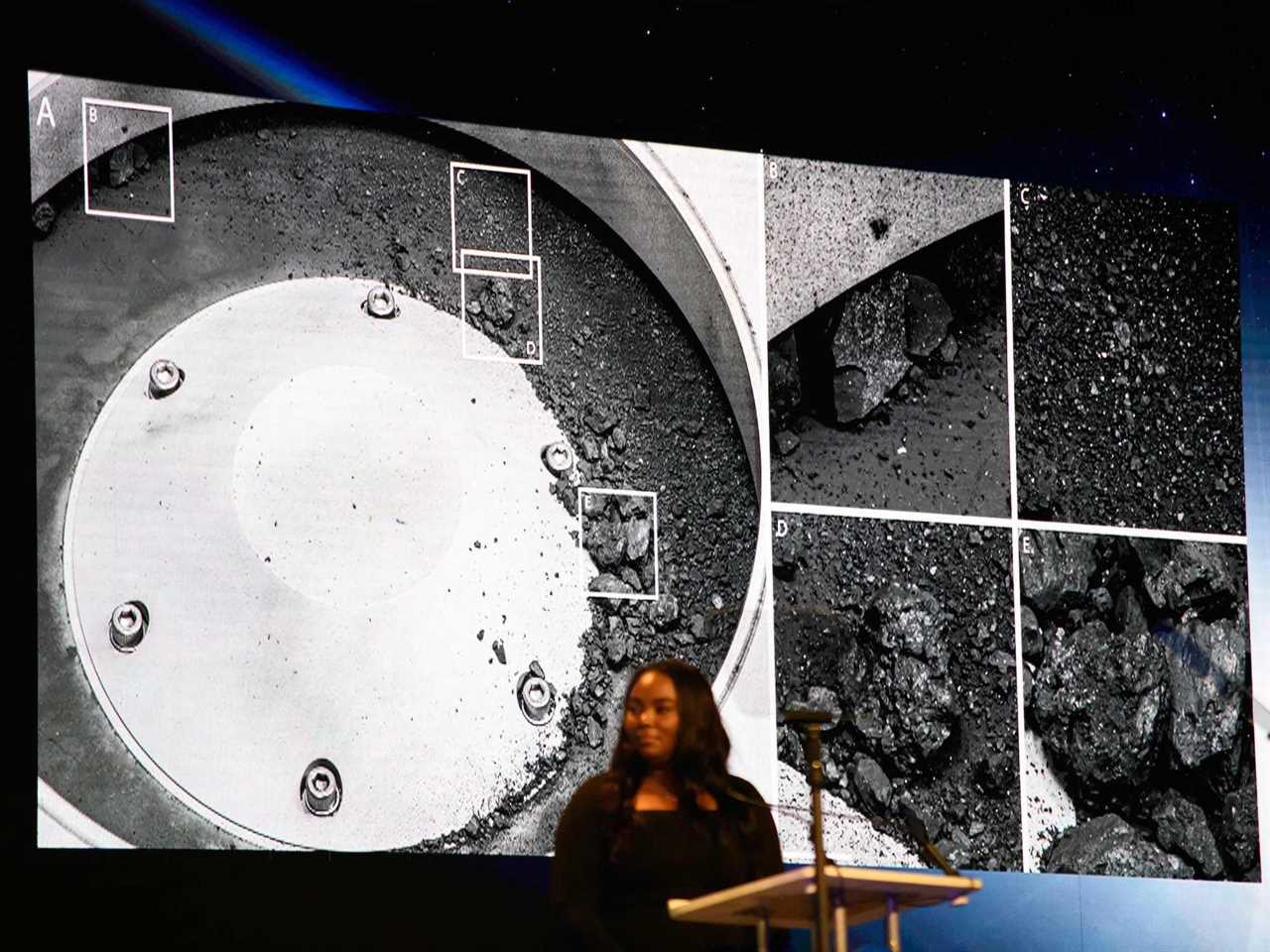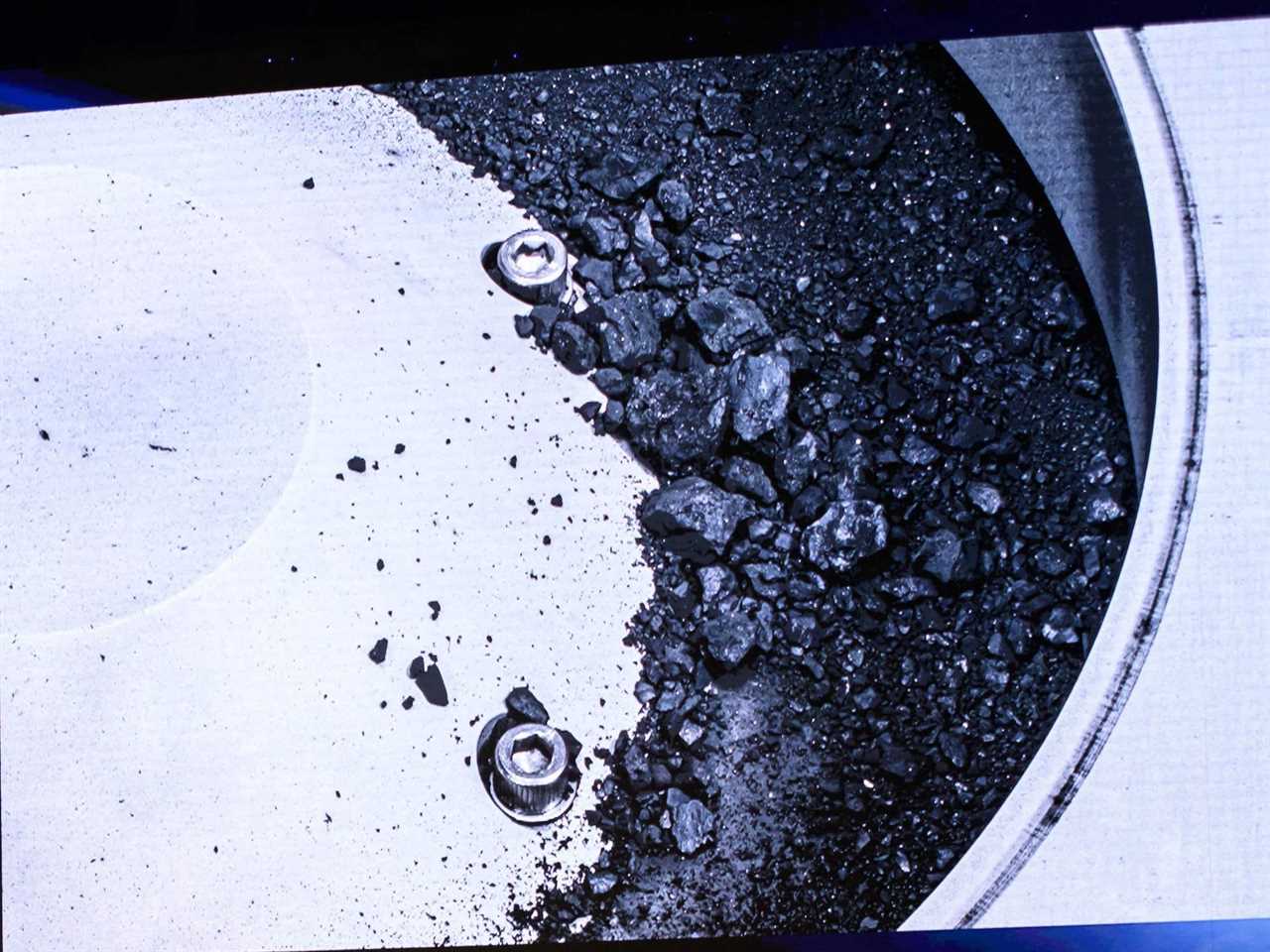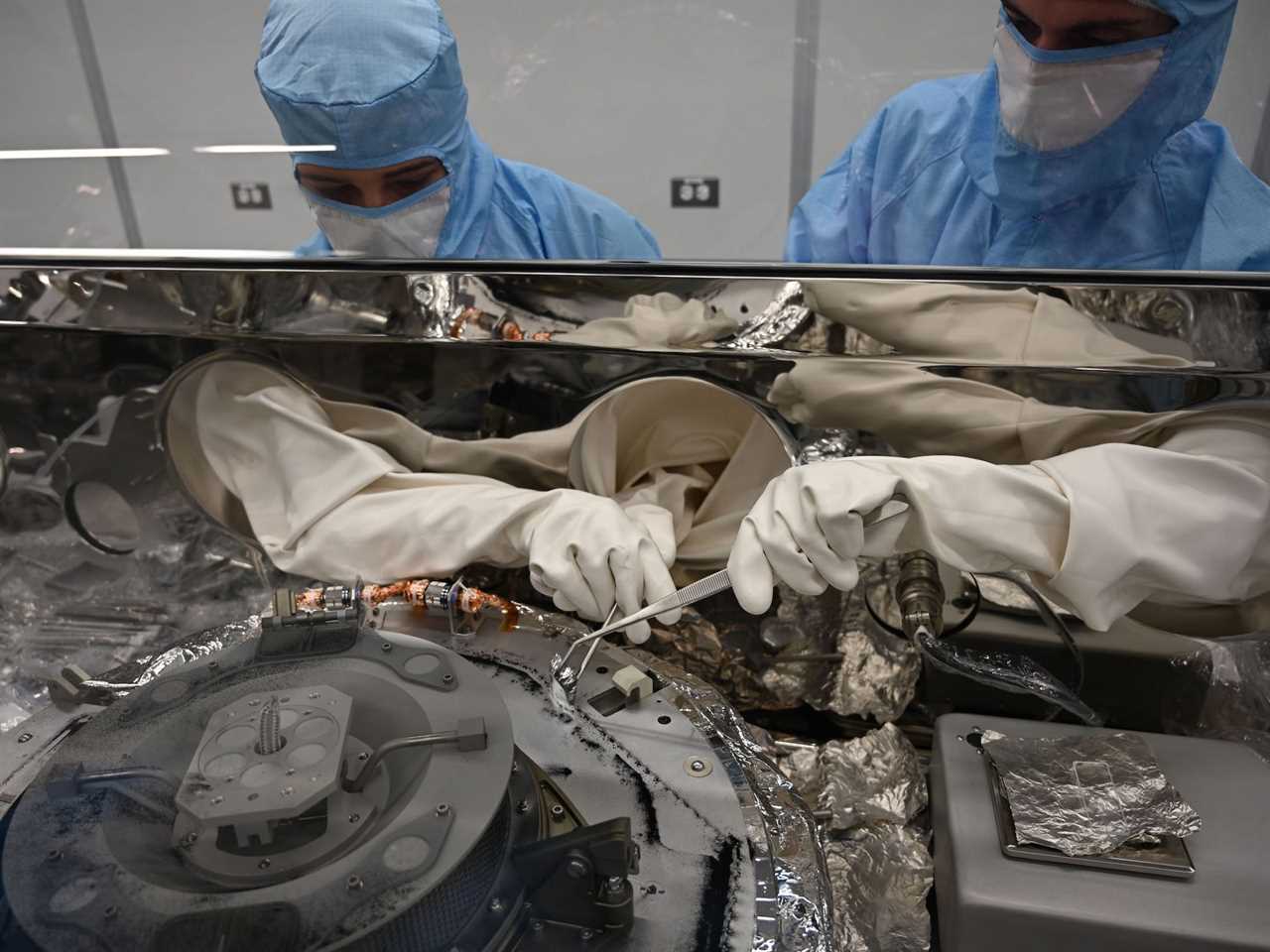
NASA/Erika Blumenfeld & Joseph Aebersold
- Last month, NASA's OSIRIS-REx spaceship dropped off a sample of dirt from the Bennu asteroid.
- Scientists have been studying it ever since.
- The black rocky regolith, or debris, contains carbon and evidence of water.
When NASA sent OSIRIS-REx to the asteroid Bennu in 2016, its scientists were hoping the asteroid's rocks and debris would give them information about the birth of the solar system and life on our planet.
They've been studying the asteroid sample the spaceship delivered in late September. After only a few weeks, the researchers have already found indications of the building blocks of life.
The sample's black rocks are rich in carbon, and there's evidence of water.
"The results presented to date are based on a few days of study of the first grains of sample," Jason P. Dworkin, a project scientist for OSIRIS-REx, told Insider via email. "There will be much to come."
Finding water and carbon from an asteroid
Already, scientists have used a variety of instruments to get an initial peek at the sample. A scanning electron microscope, infrared, X-ray diffraction, and chemical element analysis all provided early information about the secrets inside the regolith, or rocky dirt.
The team hasn't opened the interior of the sample canister yet, Dworkin said. Instead, they've been looking at the "bonus" material that they found strewn over the collection device, canister lid, and base, according to NASA.

Mark Felix/AFP via Getty Images
A 3D computer model of one of the particles showed it contained a large amount of carbon and evidence of water.
But it's not liquid water, said Dworkin. The water is trapped in minerals. "Scientists will also be searching for tiny pools of water trapped inside mineral grains such as have been found in some meteorites," he said.
What does the asteroid sample look like?
The sample is black and rocky. The color is likely a result of the high abundance of carbon and the mineral magnetite, Dworkin said. Both are found on Earth, too. Magnetite is very plentiful, present in many types of rocks.
Dworkin can't say for sure yet what the texture is like. "So far only fine particles, the size of sand or smaller, have been handled carefully with tweezers to prevent contamination," he said. They're doing all the analysis in clean rooms at NASA's Johnson Space Center in Houston, Texas.

Mark Felix/AFP via Getty Images
While they've weighed a few particles, the team is waiting on detailed density measurements, which they'll perform next month.
"We would expect samples to be a little less dense than an average rock and denser than ice," Dworkin said.
What more will scientists learn from the Bennu sample?
Dworkin said the OSIRIS-REx team has 12 major hypotheses about the sample. They want to further analyze it and interpret the findings so far of the magnetite, clay, carbonate, water, and other minerals.
That information will help them look for organic compounds necessary for life. The sample will also provide clues about the history of the solar system.

NASA
NASA is sending portions of the regolith to other institutions all over the world but also preserving much of it for future research.
"My greatest hope is that future generations of scientists will learn things I cannot imagine with new techniques and new ideas with the 70% of the sample that will be available for the future," Dworkin said.
Until then, the team expects to learn much more in the coming weeks, months, and years.
"These results aren't even the appetizer yet, just the enticing scent coming from the kitchen," said Dworkin. "But the main course is on the way and we have every reason to believe it will be spectacular."
Read More
By: [email protected] (Jenny McGrath)
Title: NASA released the first close-up photos of the largest asteroid sample ever collected
Sourced From: www.businessinsider.com/bennu-asteroid-sample-photos-nasa-carbon-water-osiris-rex-2023-10
Published Date: Fri, 13 Oct 2023 19:18:46 +0000
.png)





